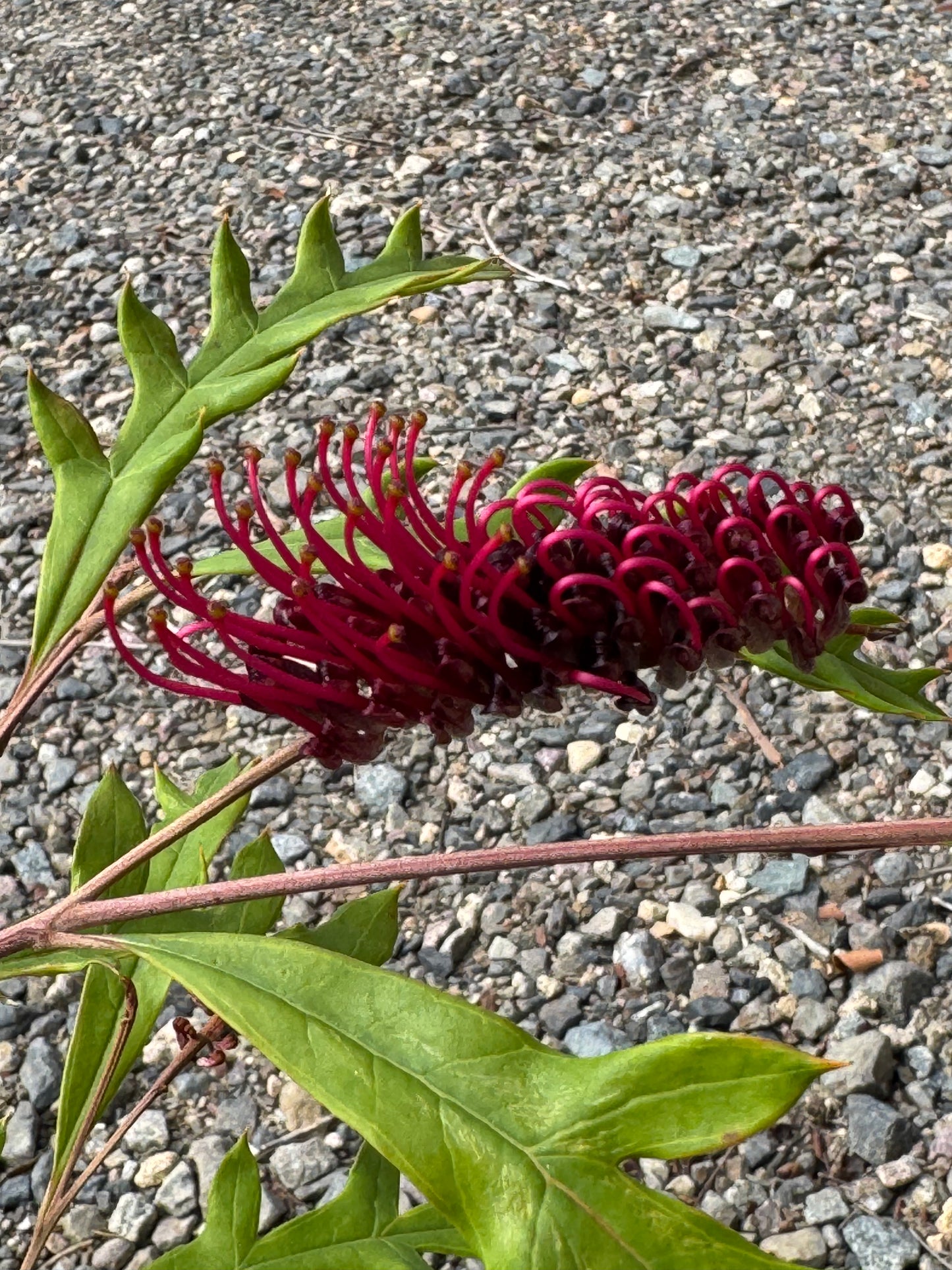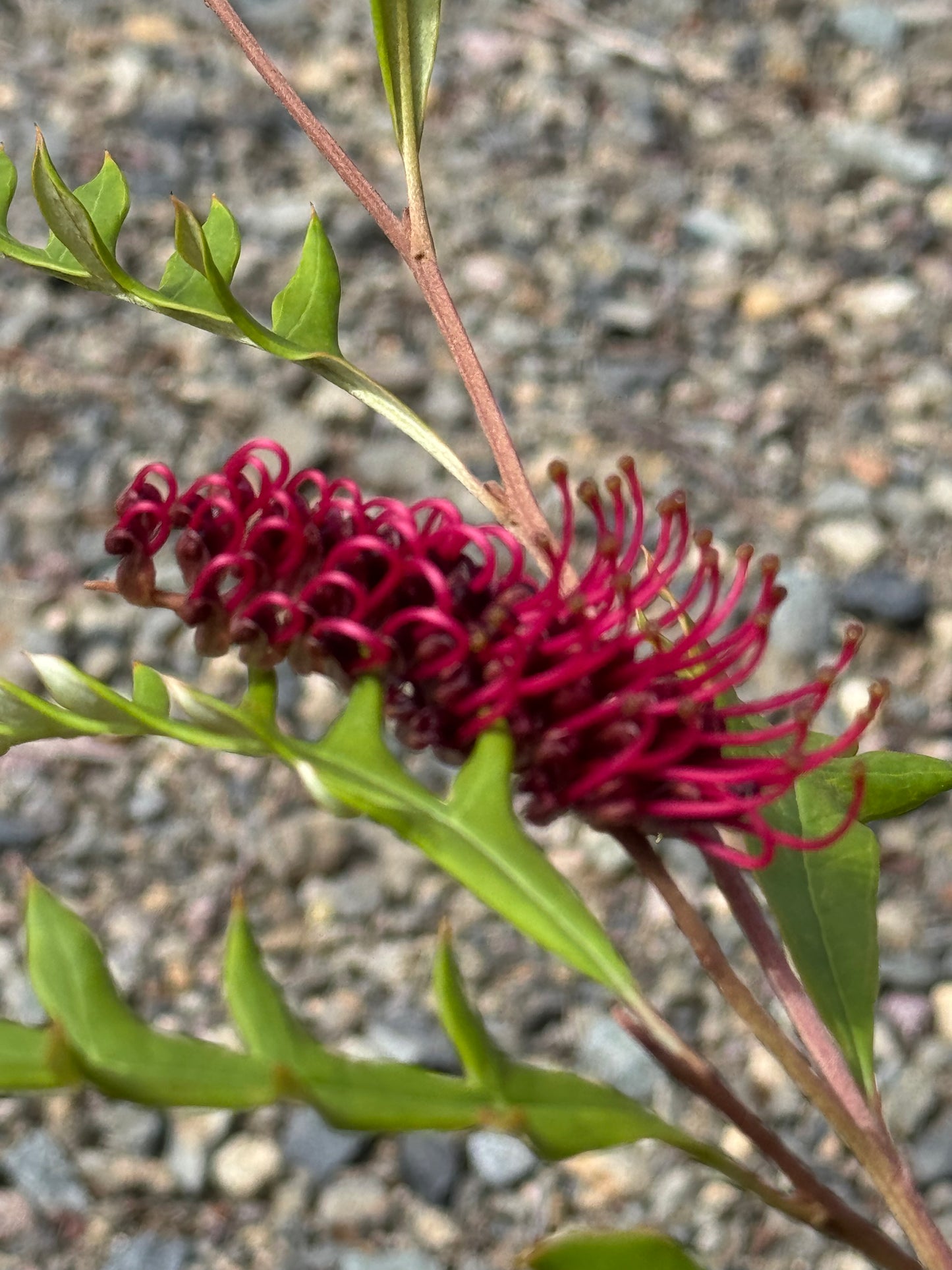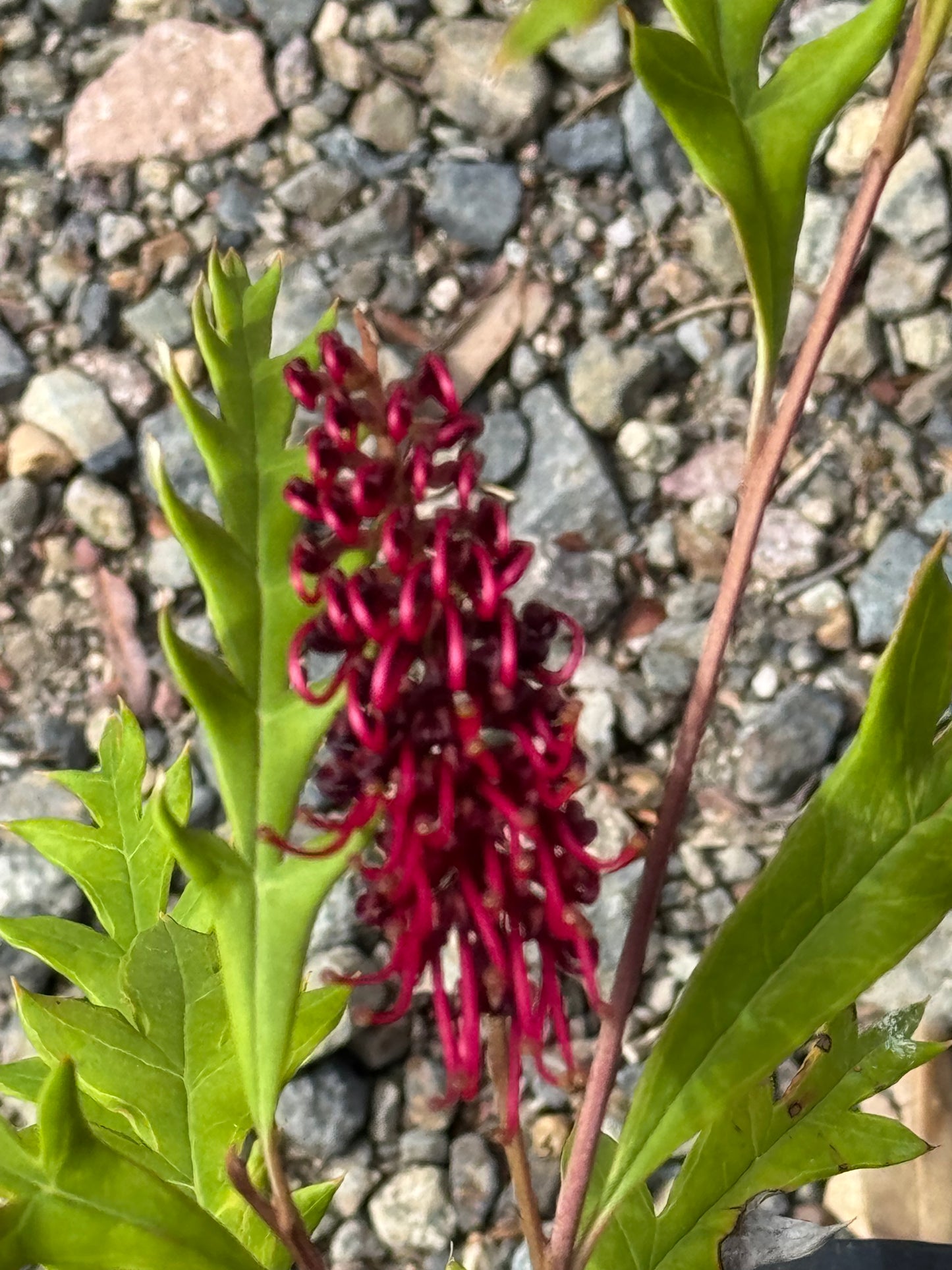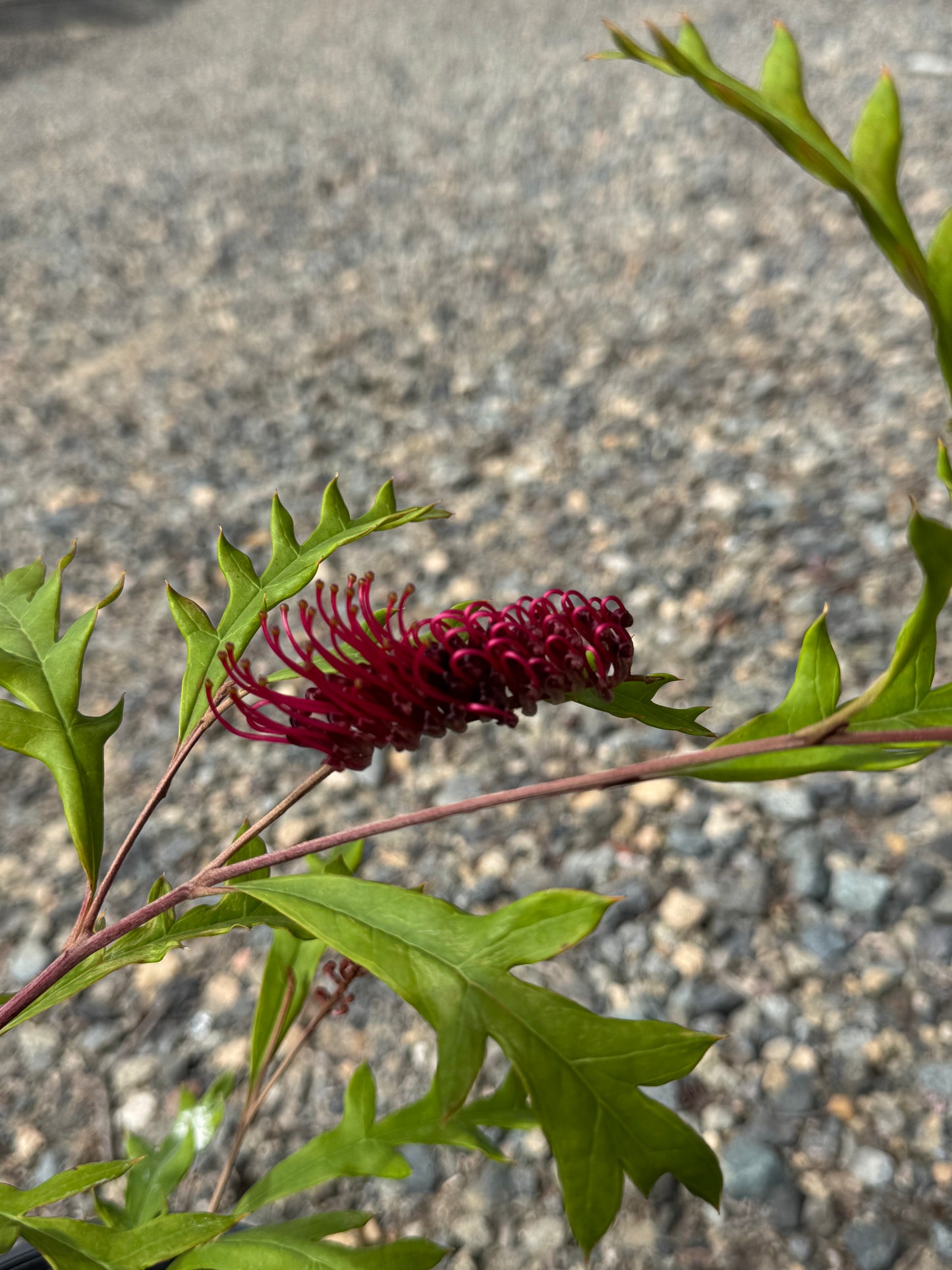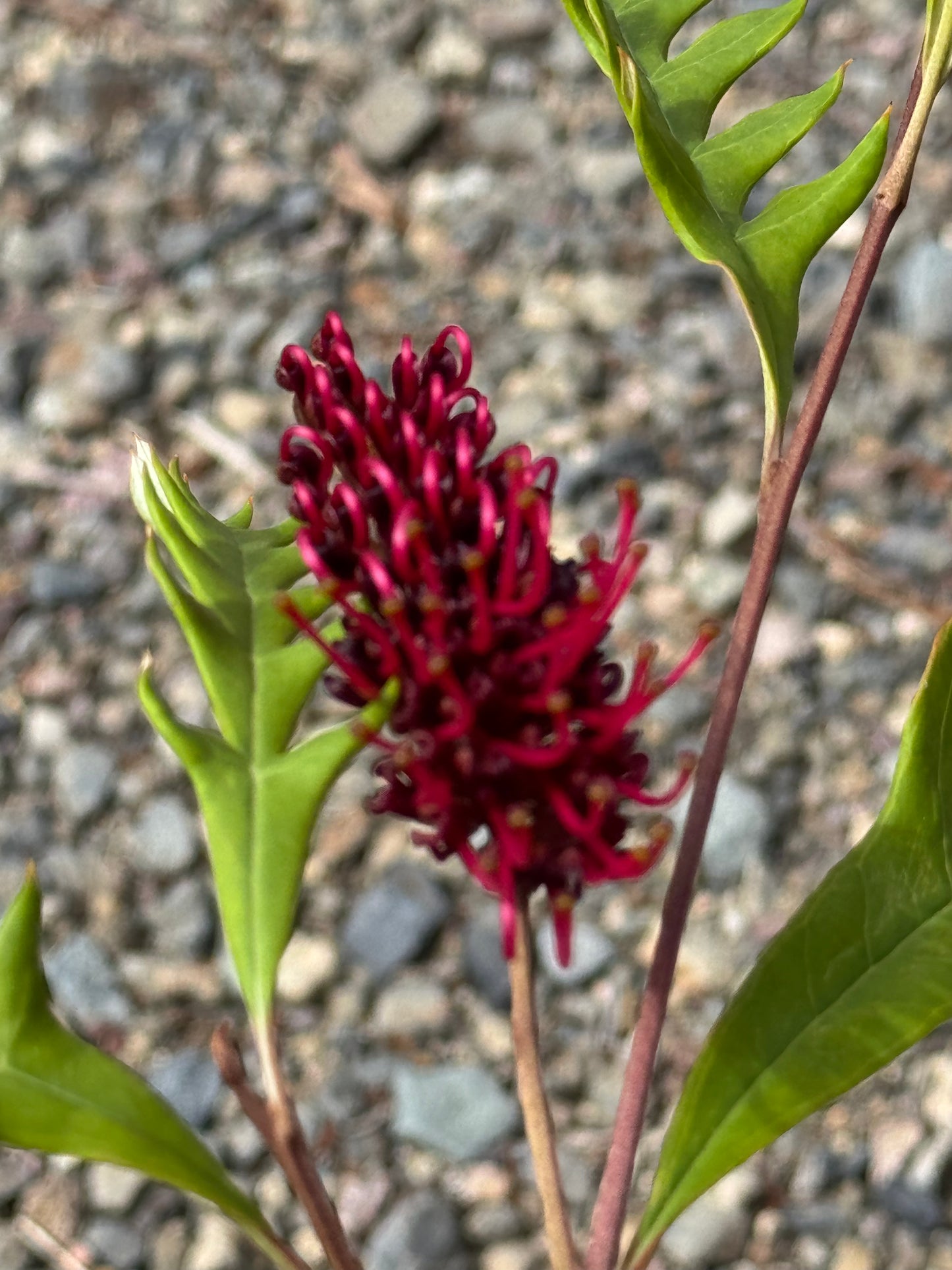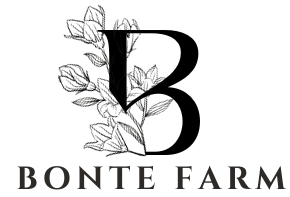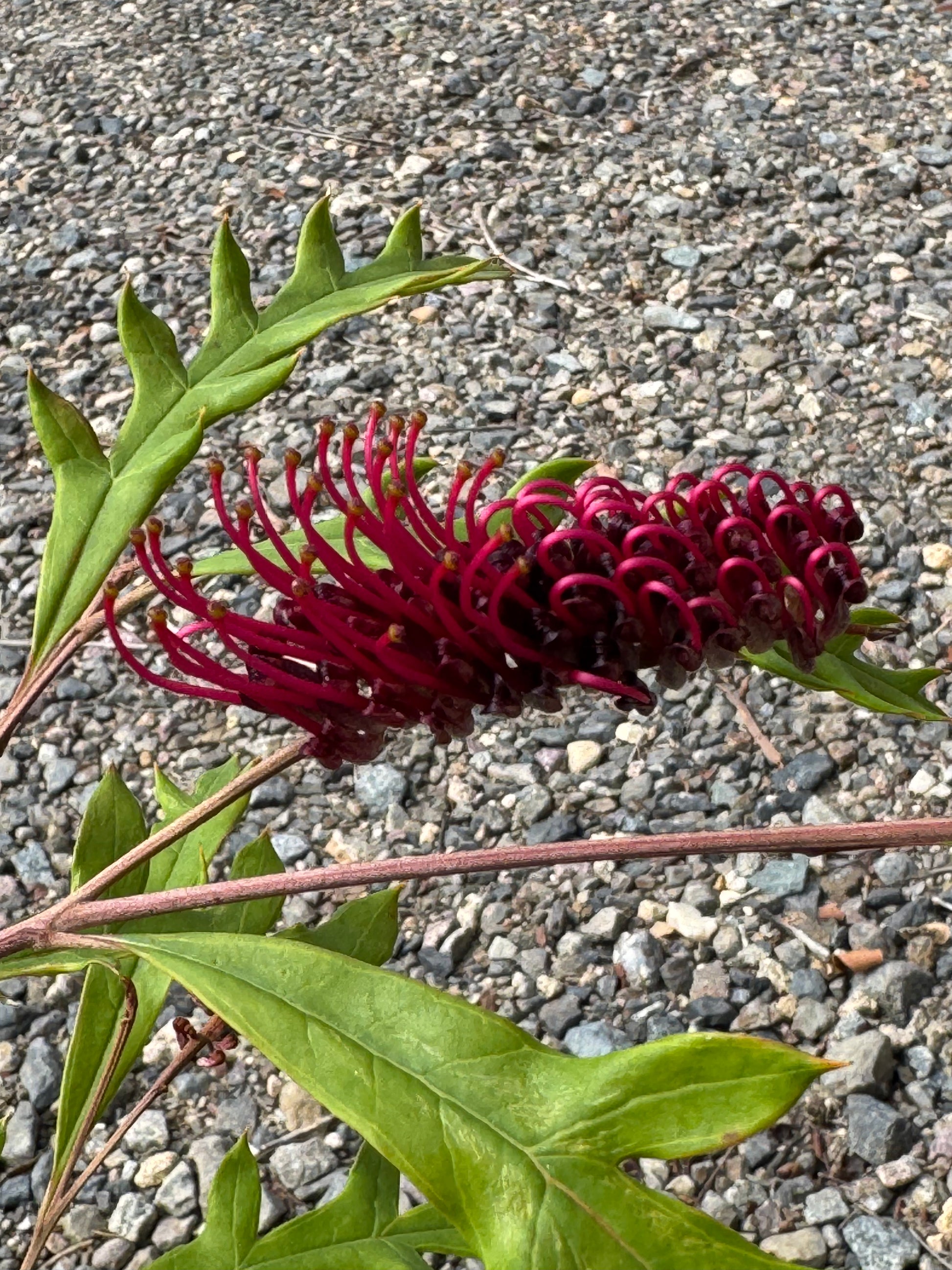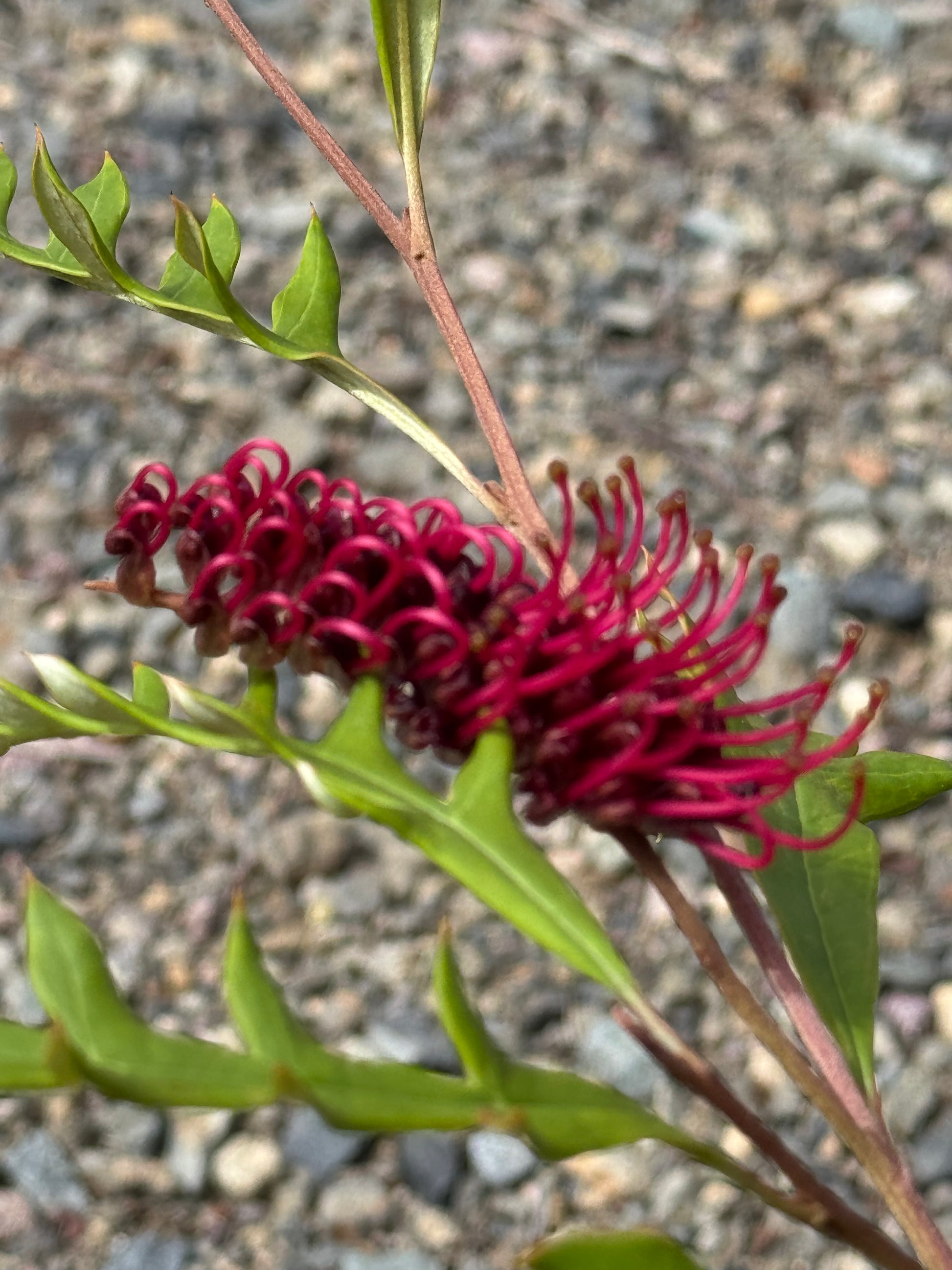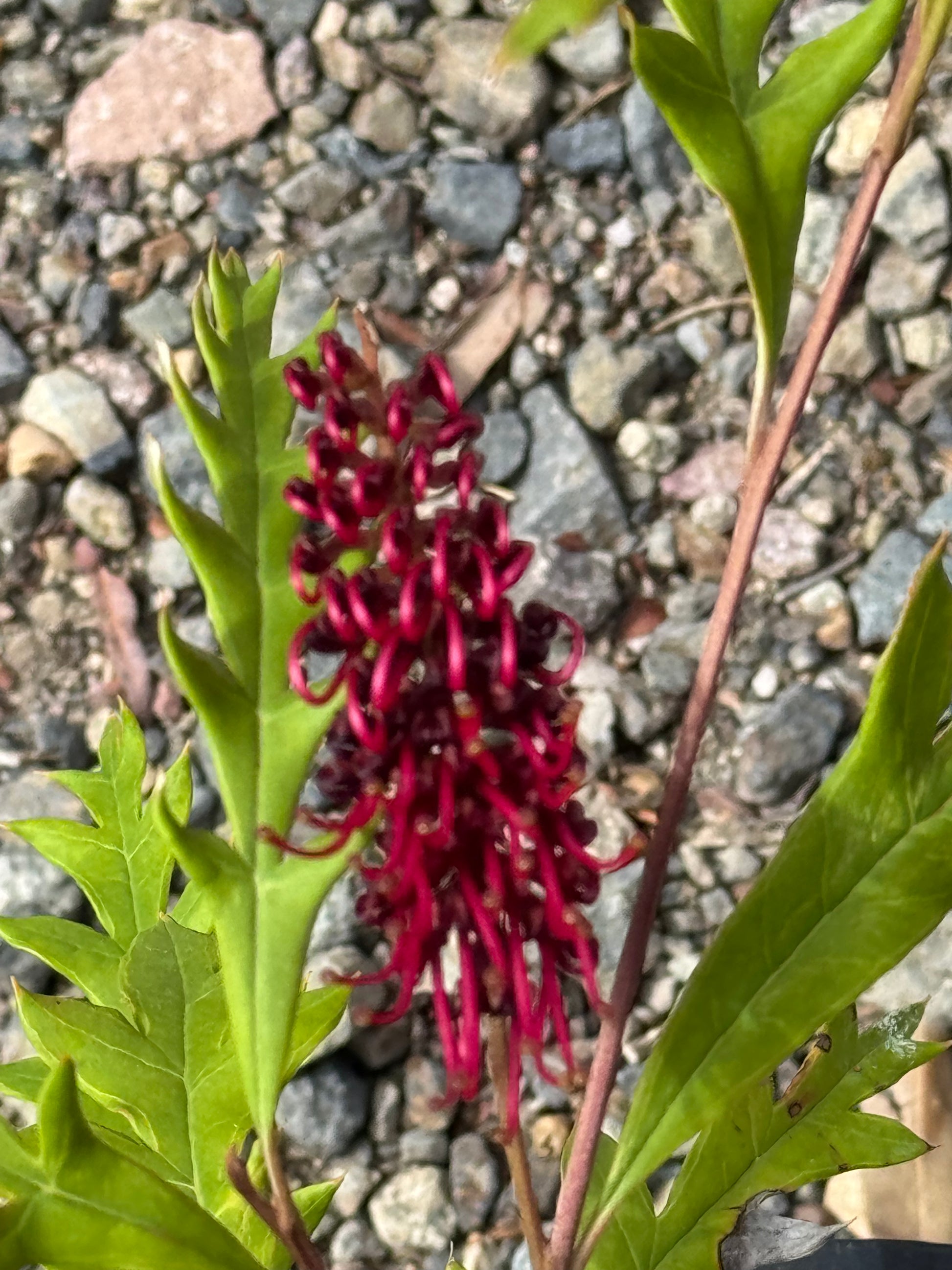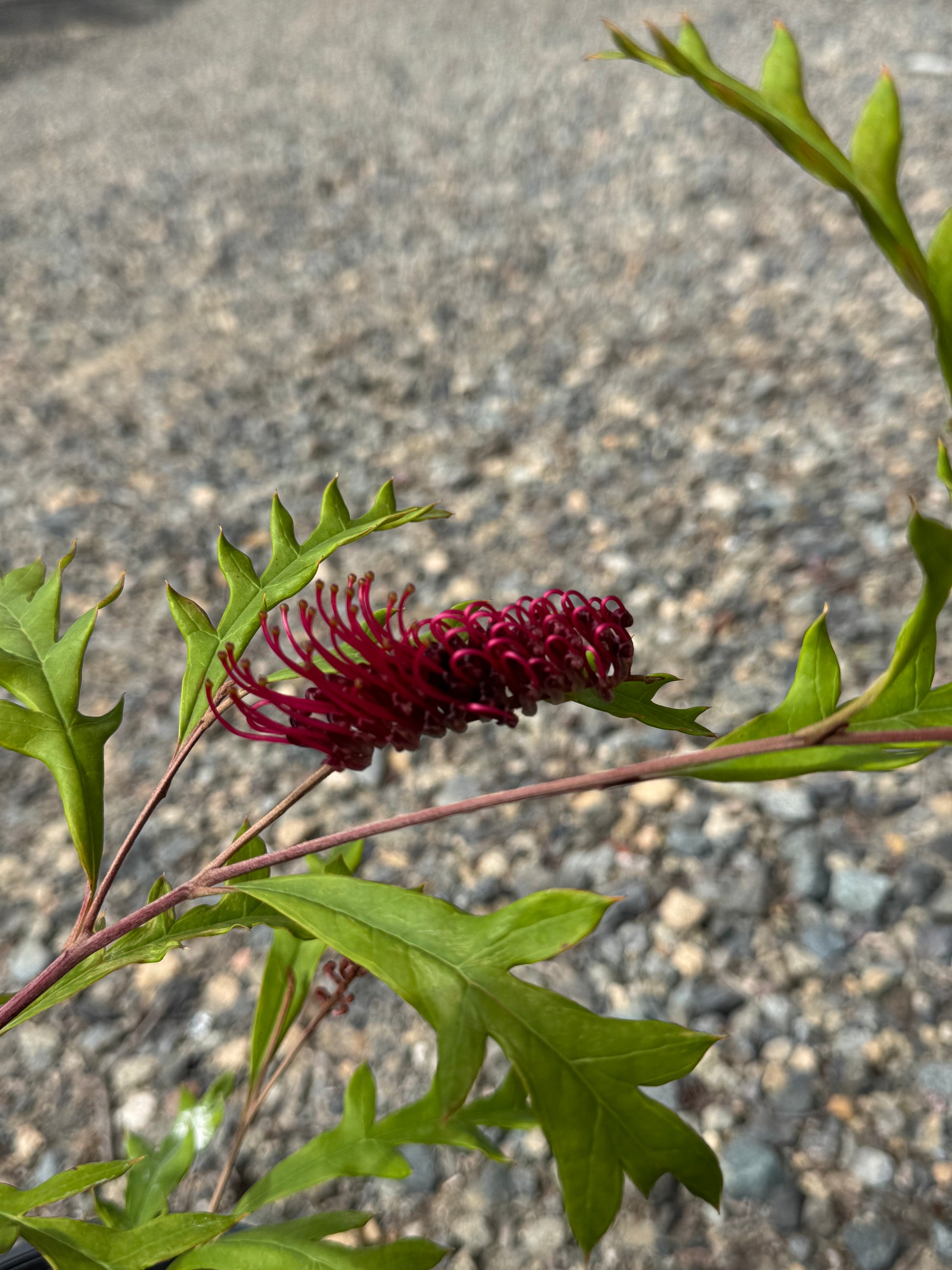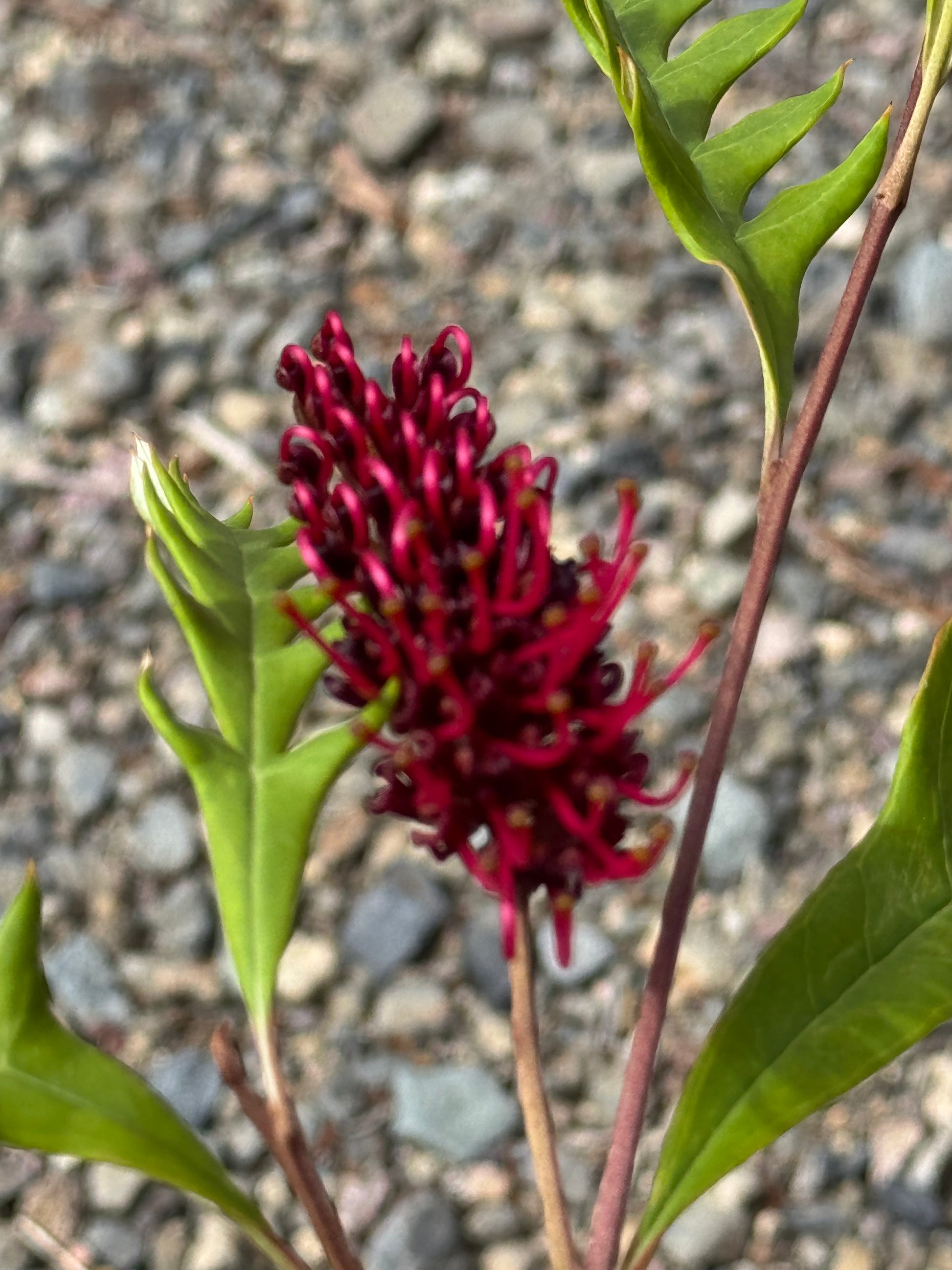Bonte Farm
Grevillea 'Fanfare': A Burst of Red in Your Garden
Grevillea 'Fanfare': A Burst of Red in Your Garden
Couldn't load pickup availability
📣 Grevillea 'Fanfare': The Vigorous, Ground-Covering, Red Bloom
The Grevillea 'Fanfare' is a remarkably vigorous and dramatic Australian native groundcover celebrated for its dense, sprawling habit and its spectacular, large, dark red blooms. This hybrid is one of the best choices for quickly covering large areas while providing year-round visual interest and erosion control. 'Fanfare' delivers a consistent display of unique, long, toothbrush-style flowers, primarily throughout the cool season, making it a key plant for winter color. As a hardy, drought-tolerant, and low-maintenance solution, 'Fanfare' is an ideal choice for large landscapes, slopes, retaining walls, and any water-wise garden where a vibrant, bird-attracting carpet is desired.
Botanical Characteristics
|
Characteristic |
Detail |
|
Scientific Name |
Grevillea 'Fanfare' (Hybrid Cultivar) |
|
Common Names |
Grevillea, Spider Flower (common genus name), Fanfare Grevillea. |
|
Growth Habit |
A prostrate and sprawling evergreen groundcover with long, trailing stems that hug the ground and root as they spread, creating a dense, effective carpet. |
|
Foliage |
Features distinct, deeply incised (lobed) leaves that are dark green above and lighter below, providing rich texture and year-round density. |
|
Flowers |
Very large, long, toothbrush-style racemes (up to 8 inches long). The color is an intense, dramatic dark red to burgundy-red. |
|
Flowering Season |
Known for its extended, heavy bloom, often flowering most profusely from fall through spring, with scattered blooms possible year-round. |
|
Nectar |
Produces a rich supply of sweet nectar, making it a highly effective magnet for nectar-feeding birds. |
Mature Size
'Fanfare' is a robust groundcover, excelling in rapid coverage and scale.
- Height: Typically remains very low, reaching only 1–2 feet (0.3–0.6 meters) in height.
- Spread: Achieves a massive, dense spread of 10–15 feet (3–4.5 meters) wide, quickly covering vast areas.
- Its vigorous, fast-spreading habit is its most valuable asset for large-scale landscaping.
USDA Hardiness Zone
This hybrid is reliably hardy in USDA Hardiness Zones 9–11. It thrives in hot, dry, and Mediterranean climates. It exhibits tolerance to light frost but requires protection from severe or prolonged freezing temperatures. It is well-suited for coastal areas.
Cultivation and Care
|
Aspect |
Care Instructions |
|
Sunlight |
Requires full sun (a minimum of 6 hours of direct sun daily) for the densest growth and most prolific flowering. Tolerates very light afternoon shade. |
|
Soil |
Essential: Demands perfectly well-drained soil. Tolerates poor, rocky, or sandy soils but is severely damaged by wet feet and heavy clay. |
|
Water |
Highly drought-tolerant once established. Water deeply during the first season. Mature plants are truly low-water and require only minimal supplemental water during extreme dry spells. |
|
Fertilizer |
Crucial: AVOID all high-phosphorus fertilizers. Grevilleas are extremely phosphorus-sensitive. Use only a specialized low-phosphorus formula for native plants or skip fertilizing entirely. |
|
Pruning |
Rarely requires pruning for height, but benefits from cutting back any aggressive stems to control the overall spread. Can be trimmed to fit edges or walkways. |
Landscape Use
- Groundcover & Erosion Control: An exceptional choice for rapidly covering large slopes, banks, and open areas for erosion control.
- Mass Planting: Ideal for mass plantings to create a dense, low-maintenance carpet of deep green and red flowers.
- Retaining Walls: Perfect for spilling over and softening the edges of retaining walls and planters.
- Xeriscape Design: An indispensable low-water, low-maintenance plant for native and arid-style gardens.
Wildlife Attraction
The abundance of sweet, rich nectar makes this plant an incredible wildlife magnet. The flowers are highly attractive to nectar-feeding birds, including hummingbirds in North America, and various native bees. The extended bloom provides a consistent food source.
Pest and Disease Resistance
Grevillea 'Fanfare' is a hardy, robust plant with strong natural resistance to most common insect pests. The primary disease concern is fungal root rot, which is a direct consequence of poor soil drainage or overwatering—this is entirely preventable by correct planting in porous, sandy soil.
Propagation
To ensure the resulting plant maintains the specific, vigorous growth habit and large red blooms of the 'Fanfare' cultivar, propagation must be achieved through vegetative methods. Semi-hardwood cuttings are the preferred and most reliable technique, generally taken during the summer months.1 Propagation from seed is not recommended as the hybrid traits will not be consistently reproduced.
Share
